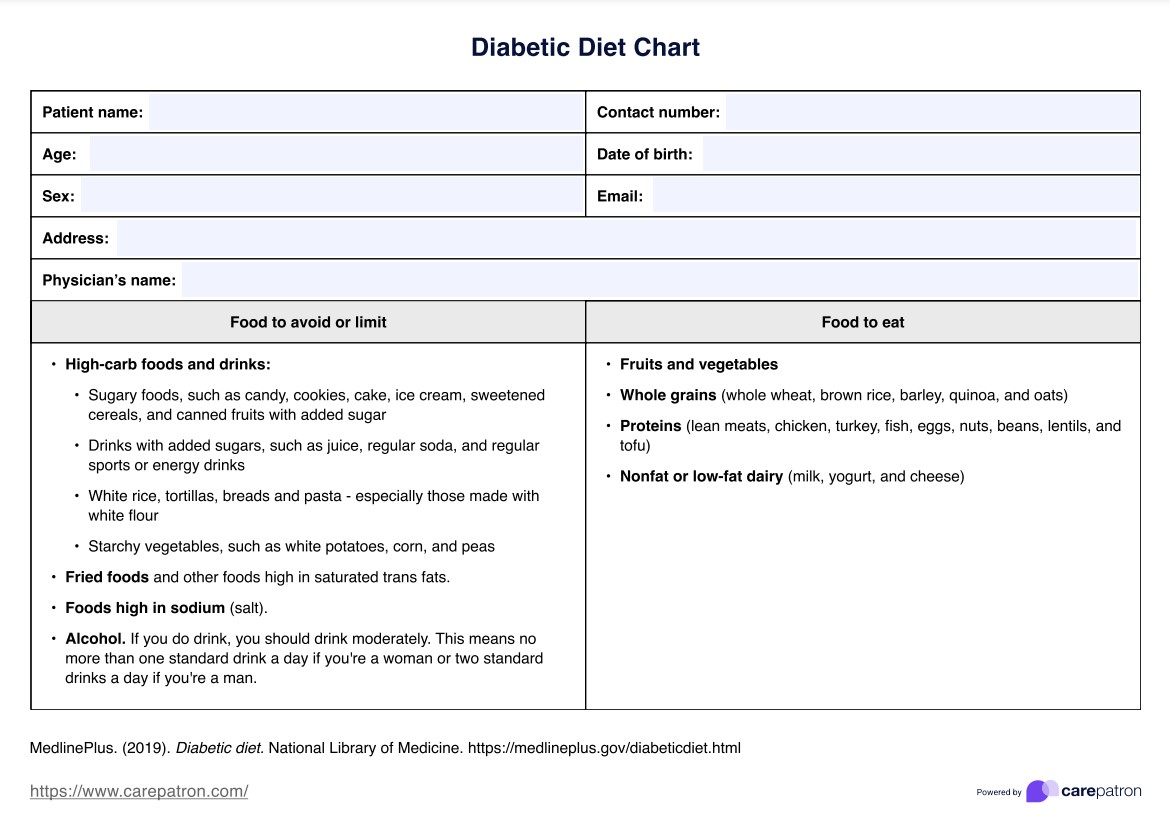Healthcare professionals recommend a Diabetes Diet Chart for people diagnosed with diabetes. This includes individuals with Type 1 or Type 2 diabetes, gestational diabetes during pregnancy, and prediabetes. It is also recommended for those at high risk of developing diabetes, such as individuals with a family history of the condition or those who are overweight or obese.

Diabetes Diet
Get this Diabetes Diet Chart to help patients manage blood sugar levels, prepare healthy meals, and improve health outcomes.
Use Template
Diabetes Diet Template
Commonly asked questions
The diabetes patient diet chart is used to manage blood sugar levels, promote weight loss, and help individuals with diabetes maintain a healthy diet. They are commonly used by people with Type 1 or Type 2 diabetes and those at risk for developing the disease.
The Diabetes Diet Chart varies based on individual needs and preferences. However, it is suggested that individuals stick to it for prolonged periods with a chronic disease like diabetes.
EHR and practice management software
Get started for free
*No credit card required
Free
$0/usd
Unlimited clients
Telehealth
1GB of storage
Client portal text
Automated billing and online payments











